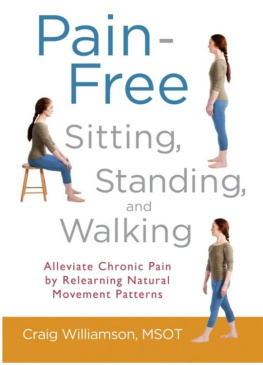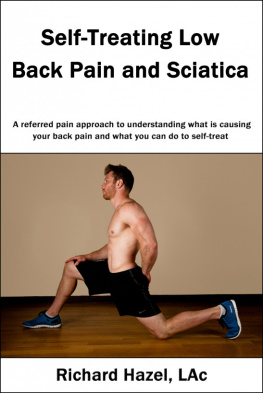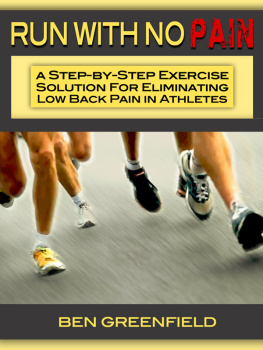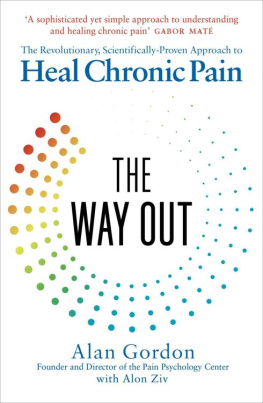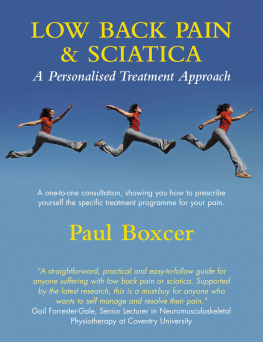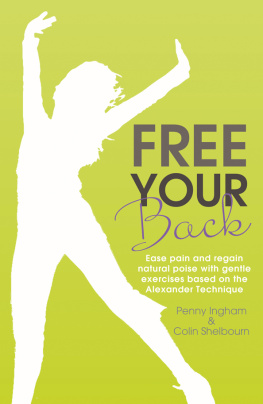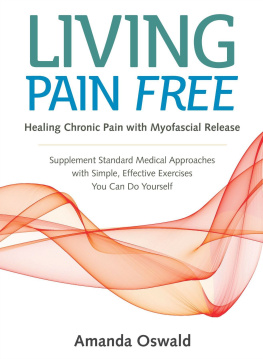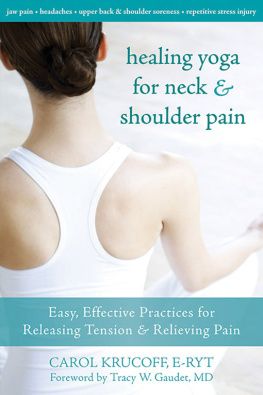Most of us spend the majority of our time sitting, standing, and walking. These are all natural activities, but if they are done without a certain degree of postural awareness, they can contribute to pain and injury and even fatigue and altered mood. Craig Williamson provides the tools we need to transform the way we perform these everyday activities.
Keelyn Wu, DO, Board Certified in Neuromuscular Medicine and Osteopathic Manipulative Medicine
ABOUT THE BOOK
Most of us take the acts of sitting, standing, and walking for granted, but for those suffering from back, muscle, and joint pain, even these seemingly simple actions can be extremely uncomfortable. Poor body alignment or habitual movement patterns that crop up when we compensate for a bad back or painful neck can only further exacerbate existing issuesand create new problems.
In this accessible workbook, Craig Williamson, a respected occupational and massage therapist, demonstrates how by just doing these three basic actions with optimal body alignment and attention, you can help free yourself from existing pain and prevent further injury.
CRAIG WILLIAMSON, MSOT, is an occupational therapist who treats patients with persistent pain problems. He is the pioneer of Somatic Integration (www.somaticintegration.com), an approach to muscular pain relief that includes muscular retraining techniques and specific, targeted exercises. He lives and practices in Portland, Maine.
Sign up to learn more about our books and receive special offers from Shambhala Publications.

Or visit us online to sign up at shambhala.com/eshambhala.
Pain-Free Sitting, Standing, and Walking
ALLEVIATE CHRONIC PAIN BY RELEARNING
NATURAL MOVEMENT PATTERNS
Craig Williamson, MSOT

Shambhala
BOSTON & LONDON
2013
Shambhala Publications, Inc.
Horticultural Hall
300 Massachusetts Avenue
Boston, Massachusetts 02115
www.shambhala.com
2013 by Craig Williamson
Photos by Troy Lucia and Nora Lindsay, of Aurora Photography
Cover design by Jim Zaccaria
The information in this book is not intended as a substitute for personalized medical advice. The reader should consult a physician before beginning this or any exercise program. If you experience increased pain during or after these exercises, it may indicate a problem that requires the attention of your physician.
All rights reserved. No part of this book may be reproduced in any form or by any means, electronic or mechanical, including photocopying, recording, or by any information storage and retrieval system, without permission in writing from the publisher.
Library of Congress Cataloging-in-Publication Data
Williamson, Craig.
Pain-free sitting, standing, and walking: alleviate chronic pain by relearning natural movement patterns / Craig Williamson.
p. cm.
eISBN 978-0-8348-2855-1
ISBN 978-1-59030-971-1 (pbk. : alk.paper)
1. Myalgia-Treatment. 2. Exercise therapy. I. Title.
RC935.M77W552012
616.742dc23
2012025190
Dedicated to Adele and Paul Williamson
Contents
I HAD the good fortune to have artists help me complete this book. Thank you to photographers Troy Lucia and Nora Lindsay for your masterful skill and patience in producing the photographs. Thank you to artist Kirsten Moorhead for your expert anatomical drawings and clarity of vision. Thank you to mime-dancer Karen Montanaro for modeling the exercises, and for being Karen Montanaro. Thank you to poet Jonathan Weinert for your brilliant way with words.
To my clients and students who continue to teach me so much, thank you. To my supportive and encouraging friends near and far, I cant thank you enough. And as always, thank you to my family.
Y OU PROBABLY already know how to sit, stand, and walk, but if you are uncomfortable when you do so, then you may need to take a closer look at how you perform these everyday movements. By practicing the exercises in this book, you can retrain your muscles to carry your body more efficiently and become aware of which muscle habits work and which do not. Muscle habits, sometimes called movement patterns, become dysfunctional when the muscles are habitually overworked or underworked. My book Muscular Retraining for Pain-Free Living explores movement patterns, carriage, and muscle pain in detail. It gives a good background for understanding the bigger picture of muscular retraining, but you do not need to read it to benefit from this book.
We are all so used to the familiar feeling of how we carry our bodies that we are often largely unaware of it. This is especially true of how we sit, stand, and walk, because we do these things automatically all day long. Many of us have developed dysfunctional movement patterns that do not allow us to sit, bend, crawl, squat, stand, walk, and run in the pain-free way we did as young children.
Your body is designed and programmed to move easily. Regardless of what has happened in your life, the memory of pain-free movement is still within you. You can tap into this memory by practicing natural movement patterns. The exercises described in this book will systematically retrain your muscles and improve your carriage.
The movement explorations and exercises let you feel ways of moving that are not your everyday muscle habits. When I am helping someone with sitting, standing, or walking, they often say something like, Show me how to do it, or Tell me what to do. My job is not to show you how to do it but to help you feel movement in a new way so that you learn to listen to your senses, which tell you when you are moving correctly. This kind of learning is not a process of imitation but of reconnecting with your bodys feeling intelligence, the part of you that already knows how to move.
K INESTHETIC A WARENESS
Learning to carry your body with good alignment involves having normal kinesthetic awareness. Kinesthesia literally means movement feeling. Kinesthetic dysfunction is the term I use to describe when someone does not accurately sense effort and relaxation in the muscles. Chapter 2 of Muscular Retraining for Pain-Free Living is devoted to this phenomenon. If you are not familiar with kinesthetic dysfunction, I encourage you to read it.
Muscular retraining is kinesthetic retraining. Muscles function based on the available kinesthetic awareness. As you practice the exercises in this book, remember that your kinesthetic awareness allows you to improve how you carry yourself, how you use your muscles, and your capacity to relax your muscles.
P AIN AND E MOTIONS
The body, mind, and psyche are not separate from each other. Because we have been heavily conditioned to think otherwise, we can become confused when it comes to interpreting physical pain. Pain is one way you get information, not just about your body, but also about your mind and psyche. In other words, pain helps you find out something about yourself.
Psychogenic painactual physical pain that has a psychological originis commonplace. The root of such pain is the unconscious capacity to repress thoughts and feelings, which prevents you from being aware of their existence. In the same way that you can be unaware of kinesthetic feelings, you can also be unaware of emotional feelings.
The subject of psychogenic pain is beyond the scope of this book, but it is tremendously important. The mind and psyche are rarely absent from chronic pain problems and are often at the bottom of them. Dont let your practice of corrective exercises fool you into thinking that the cause of your pain is purely physical. Few health issues are purely physical, because the body, mind, and psyche are interdependent. If you do not keep this fact in mind, the exercises you do may distract you from becoming aware of unconscious thoughts and feelings that are trying to get your attention through your pain. It is important to consider the role of repressed emotions and undermining thoughts in any ongoing pain problem.
Next page
